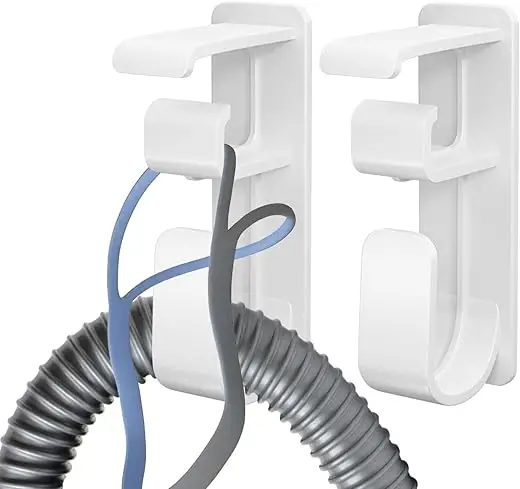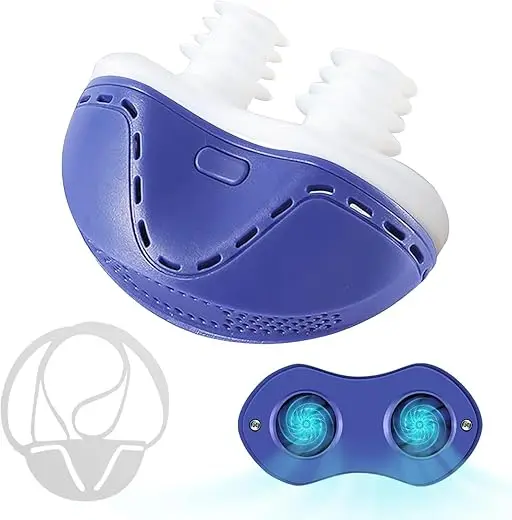Quick Overview: The Three Distinct Types
Sleep apnea isn’t one condition but three distinct types: Obstructive Sleep Apnea (OSA) affecting 84% of cases where the airway physically blocks, Central Sleep Apnea (CSA) affecting 5% where the brain fails to signal breathing, and Complex/Mixed Sleep Apnea affecting 15% combining both problems. Each type requires different treatment approaches, and using the wrong treatment can actually worsen the condition.
Understanding which type you have isn’t just academic—it’s essential for successful treatment. CPAP might cure OSA but worsen CSA. Medications helping CSA could dangerous for OSA. This comprehensive guide breaks down each type, their unique characteristics, and why proper identification changes everything.
Type 1: Obstructive Sleep Apnea (OSA) – The Physical Blockage
Understanding the Obstruction
What Happens in OSA: Think of breathing through a collapsible straw. During sleep, throat muscles relax, and tissues collapse into the airway. Your brain keeps trying to breathe, your chest moves, but no air gets through. It’s like someone putting their hand over your mouth and nose while you sleep.
The Anatomical Collapse:
- Sleep begins, muscles relax
- Tongue falls backward
- Soft palate drops
- Throat tissues collapse inward
- Airway narrows or closes completely
- Breathing stops despite effort
- Oxygen drops, CO2 rises
- Brain forces emergency awakening
- Gasp/snort opens airway
- Cycle repeats all night
OSA Statistics and Demographics
Prevalence:
- 84% of all sleep apnea cases
- 25% of men over 40
- 10% of women over 40
- 40% of obese individuals
- 3-7% of children
Severity Distribution:
- Mild (AHI 5-14): 60% of OSA cases
- Moderate (AHI 15-29): 25% of cases
- Severe (AHI ≥30): 15% of cases
Unique OSA Characteristics
Classic Signs:
- Loud, persistent snoring
- Witnessed choking/gasping
- Visible breathing effort during apneas
- Partner can see chest moving without breathing
- Sweating from physical effort
- Restless sleep from struggling
Physical Findings:
- Large neck circumference
- Obesity (BMI >30)
- Enlarged tonsils/adenoids
- Receding chin
- High-arched palate
- Nasal obstruction
OSA Subtypes
Positional OSA:
- 50-60% of OSA patients
- Supine AHI 2x higher than lateral
- Normal breathing on side
- Severe apnea on back
- Gravity-dependent collapse
REM-Related OSA:
- Worse during dream sleep
- Muscle tone lowest in REM
- More common in women
- Overall AHI may seem mild
- Most dangerous events
Anatomical OSA:
- Structural abnormalities
- Micrognathia (small jaw)
- Retrognathia (receding chin)
- Macroglossia (large tongue)
- Surgery often needed
OSA Risk Factors
Major Risk Factors:
- Male gender (2-3x higher)
- Age >40
- Obesity (strongest factor)
- Family history
- Alcohol use
- Sedative medications
- Smoking
- Nasal congestion
Anatomical Predispositions:
- Thick neck (>17″ men, >16″ women)
- Narrow airway naturally
- Large tonsils/adenoids
- Deviated septum
- Asian ancestry (craniofacial)
OSA Treatment Approaches
Gold Standard – CPAP:
- 95% effective when used
- Positive pressure splints airway
- Pressure typically 6-15 cmH2O
- Immediate symptom relief
- Various mask options
Surgical Options:
- UPPP (uvulopalatopharyngoplasty)
- Tonsillectomy/adenoidectomy
- Maxillomandibular advancement
- Inspire implant (hypoglossal nerve)
- Bariatric surgery if obese
Alternative Treatments:
- Oral appliances (70% effective)
- Positional therapy
- Weight loss (10% = 26% AHI reduction)
- Myofunctional therapy
- Nasal dilators/strips
Type 2: Central Sleep Apnea (CSA) – The Brain Signal Failure
Understanding Central Apnea
What Happens in CSA: Your airway stays completely open, but your brain temporarily “forgets” to send the signal to breathe. There’s no physical obstruction, no struggle, just… nothing. Your chest doesn’t move, your diaphragm doesn’t contract. It’s as if your automatic breathing switch turns off.
The Neurological Failure:
- Normal sleep breathing
- Respiratory control center misfires
- No signal sent to breathing muscles
- Complete cessation of breathing effort
- No chest or abdominal movement
- Airway remains open
- Oxygen drops gradually
- Chemoreceptors detect changes
- Emergency breathing triggered
- Pattern may repeat or normalize
CSA Statistics and Demographics
Prevalence:
- 5% of sleep apnea cases (primary)
- 20-40% in heart failure patients
- 10% of stroke survivors
- Higher in elderly
- More common at altitude
Associated Conditions:
- Congestive heart failure (30-50%)
- Atrial fibrillation (20-30%)
- Chronic opioid use (30%)
- Stroke/brain injury (10-20%)
- Kidney failure (10%)
Types of Central Sleep Apnea
Primary CSA (Idiopathic):
- No clear cause
- Rare (<1% of CSA)
- Often in elderly
- Male predominance
- Good prognosis
Cheyne-Stokes Breathing:
- Crescendo-decrescendo pattern
- Associated with heart failure
- Distinctive waxing-waning
- Poor prognosis marker
- Specific treatment needed
High-Altitude CSA:
- Above 8,000 feet
- Temporary condition
- Affects most people
- Resolves descending
- Acetazolamide helps
Medication-Induced CSA:
- Opioids primary cause
- Dose-dependent
- Methadone highest risk
- Benzodiazepines contribute
- Reversible if stopped
CSA with Medical Conditions:
- Post-stroke
- Brain tumors
- Parkinson’s disease
- Multiple sclerosis
- Kidney disease
Unique CSA Characteristics
Different from OSA:
- No snoring typically
- No breathing effort visible
- Partner reports “not breathing”
- Peaceful appearance during events
- No gasping/choking usually
- Awakening with shortness of breath
Diagnostic Findings:
- No respiratory effort on PSG
- Open airway on imaging
- Normal anatomy usually
- Heart problems common
- Neurological findings possible
CSA Risk Factors
Primary Risk Factors:
- Heart failure
- Stroke history
- Opioid medications
- Male gender
- Age >65
- Atrial fibrillation
Secondary Factors:
- Chronic kidney disease
- High altitude residence
- Hypothyroidism
- Acromegaly
- Neurological disorders
CSA Treatment Approaches
Adaptive Servo-Ventilation (ASV):
- Best for CSA without heart failure
- Adjusts pressure breath-by-breath
- Provides backup rate
- 90% effective
- Contraindicated in some heart failure
BiPAP with Backup Rate:
- Alternative to ASV
- Set breathing rate
- Good for opioid-induced
- Insurance often covers
- Requires titration
Other Treatments:
- Oxygen supplementation
- Acetazolamide (medication)
- Theophylline
- Phrenic nerve stimulation
- Treat underlying condition
CPAP Concerns:
- May worsen CSA
- Can trigger complex apnea
- Lower pressures used
- Careful monitoring needed
- Not first-line for pure CSA
Type 3: Complex/Mixed Sleep Apnea – The Combination Problem
Understanding Complex Sleep Apnea
What Is Complex Sleep Apnea: Also called “treatment-emergent central sleep apnea,” this type combines both obstructive and central events. Most confusing: it often emerges when treating OSA with CPAP. You fix the obstruction, but central apneas appear or worsen.
The Dual Problem:
- Initial OSA diagnosis
- CPAP treatment started
- Obstructive events resolve
- Central apneas emerge
- Overall AHI remains high
- CPAP seems to “fail”
- Different treatment needed
Complex Sleep Apnea Statistics
Prevalence:
- 15% of sleep apnea patients
- 5-20% of CPAP users develop it
- More common in men (4:1)
- Increases with age
- Higher in cardiac patients
Development Patterns:
- Immediate (first CPAP night): 40%
- Delayed (weeks-months): 30%
- Intermittent: 20%
- Progressive: 10%
Why Complex Apnea Develops
Theoretical Mechanisms:
Loop Gain Theory:
- Unstable ventilatory control
- Overcompensation to CO2 changes
- CPAP unmasks instability
- Creates oscillating pattern
- Central events result
Unmasking Theory:
- Central apneas always present
- Hidden by obstructive events
- CPAP reveals underlying CSA
- Not truly “emergent”
- Was mixed all along
CO2 Washout Theory:
- CPAP increases ventilation
- CO2 levels drop too low
- Below apneic threshold
- Central apneas triggered
- Resolves with adaptation
Identifying Complex Sleep Apnea
Diagnostic Criteria:
- Initially diagnosed with OSA
- Central apneas ≥5/hour on CPAP
- Central events >50% of total
- Persists beyond adaptation period
- Not explained by other factors
Warning Signs During CPAP:
- AHI not improving
- Different symptom pattern
- Feeling worse on CPAP
- Central apneas on download
- Persistent fatigue
Complex Apnea Subtypes
Transient Complex Apnea:
- Resolves within 2-3 months
- Body adapts to CPAP
- No treatment change needed
- Most common type (60%)
- Good prognosis
Persistent Complex Apnea:
- Continues beyond 3 months
- Requires different treatment
- ASV or BiPAP-ST needed
- Poorer prognosis
- Ongoing management
CPAP-Induced CSA:
- True emergence of centrals
- Not present initially
- Pressure-dependent
- May need pressure reduction
- Careful balance required
Risk Factors for Complex Apnea
Who’s at Risk:
- Male gender (strongest)
- Age >65
- Heart disease
- High CPAP pressures needed
- Severe OSA initially
- Opioid use
- Previous stroke
Predictive Factors:
- CAI >5 at baseline
- Periodic breathing
- Heart failure
- Low CO2 levels
- High loop gain
Treating Complex Sleep Apnea
First-Line: Time and Patience
- 60% resolve spontaneously
- Continue CPAP 2-3 months
- Lower pressure if possible
- Add features (EPR, flex)
- Monitor closely
Second-Line: Advanced PAP
Adaptive Servo-Ventilation (ASV):
- Most effective for complex
- Targets both types
- Algorithm prevents centrals
- 90% success rate
- Expensive option
BiPAP with Backup Rate:
- Good alternative
- Set respiratory rate
- Insurance friendly
- Effective for many
- Requires expertise
Other Strategies:
- Reduce CPAP pressure
- Add dead space
- Oxygen supplementation
- Acetazolamide
- Position changes
Comparing the Three Types
Diagnostic Differences
Sleep Study Findings:
OSA:
- Respiratory effort present
- Paradoxical breathing
- Snoring between events
- Position-dependent often
- REM-worse common
CSA:
- No respiratory effort
- No paradoxical movement
- Silent between events
- Position-independent
- Stage-independent
Complex:
- Both patterns present
- Changes with treatment
- Variable presentation
- Confusing picture
- Requires expertise
Treatment Response
CPAP Success Rates:
- OSA: 90-95% effective
- CSA: May worsen (30%)
- Complex: Initially fails (definition)
Alternative Success:
- OSA: Surgery, oral appliances work
- CSA: ASV/BiPAP required
- Complex: Advanced PAP needed
Prognosis Differences
Long-term Outcomes:
OSA:
- Excellent with treatment
- Symptoms reverse quickly
- Complications preventable
- Normal life expectancy
- Treatment straightforward
CSA:
- Depends on underlying cause
- Heart failure = poorer
- Idiopathic = good
- Treatment complex
- Monitoring needed
Complex:
- Variable prognosis
- Often resolves
- Some persistent
- Requires patience
- Good with right treatment
Overlap Syndromes
OSA-COPD Overlap
The Double Hit:
- OSA + COPD together
- Worse than either alone
- Higher mortality
- Oxygen often needed
- BiPAP common
Obesity Hypoventilation + OSA
Pickwickian Syndrome:
- Severe obesity
- Daytime CO2 retention
- OSA at night
- BiPAP required
- Weight loss critical
Making the Right Diagnosis
Why Type Matters
Treatment Implications:
- Wrong treatment can worsen
- Insurance requirements differ
- Equipment varies
- Prognosis different
- Monitoring needs vary
Getting Properly Diagnosed
Essential Testing:
- In-lab polysomnography best
- Distinguishes types
- Home tests miss CSA
- May need multiple studies
- Expertise interpretation crucial
Your Action Plan
If You Suspect Sleep Apnea
- Document all symptoms
- Note snoring patterns
- Record witnessed events
- Track daytime impact
- Request proper testing
After Diagnosis
Know Your Type:
- Ask specifically which type
- Understand percentages
- Review study results
- Discuss treatment options
- Monitor response
If Treatment Isn’t Working
Consider Complex Apnea:
- Request data download
- Look for central events
- Ask about ASV/BiPAP
- Get second opinion
- Don’t give up
The Bottom Line
Understanding the three types of sleep apnea transforms treatment success. OSA responds beautifully to CPAP, CSA needs specialized ventilation, and Complex requires patience and expertise. The key is proper diagnosis and targeted treatment.
Don’t accept generic “sleep apnea” diagnosis. Know your type, understand your treatment options, and ensure you’re getting the right therapy for your specific condition. The difference between types isn’t trivial—it determines whether treatment succeeds or fails.
Remember:
- OSA = physical blockage needing pressure
- CSA = brain signal problem needing ventilation
- Complex = both problems needing sophisticated solutions
Your type determines your treatment, and your treatment determines your outcome. Get it right, and sleep apnea becomes manageable. Get it wrong, and you’ll struggle unnecessarily.
Knowledge of your sleep apnea type empowers successful treatment. Don’t settle for generic diagnosis or one-size-fits-all treatment. Demand specific typing and targeted therapy.



